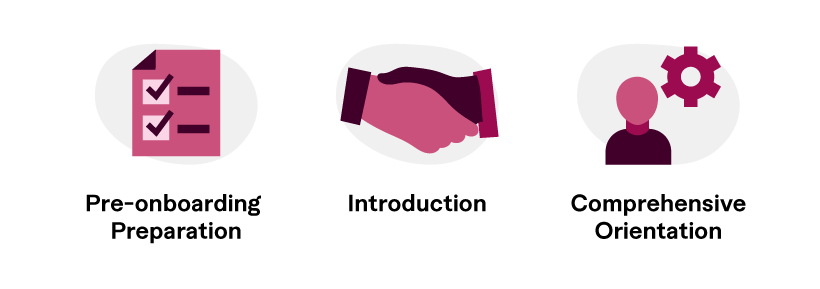Let’s face it: relying only on internal, full-time teams in today’s business landscape will limit your capacity to seize opportunities.
To stay ahead of competitors, companies must adopt more modern approaches, such as leveraging fractional talent to meet dynamic market demands and evolving business needs. Integrating fractional teams facilitates a shift towards more specialized and flexible workforce solutions, allowing access to a pool of expertise without committing resources and finances to full-time hires.
The big question is – how does adopting fractional teams impact your company’s organizational culture?
That’s what this guide is about. We’ll explore how integrating fractional talent can reshape your workplace dynamics and foster a more agile, adaptable, and collaborative environment that facilitates business success and growth.
Understanding Corporate Culture in the Context of Fractional Teams
Corporate culture is the shared beliefs, values, and practices that characterize an organization. It can influence how employees make decisions, interact, and perceive their roles within a company.
In the context of fractional teams, corporate culture involves fostering flexible, inclusive, and effective communication to integrate professionals who divide their time across multiple organizations.
To achieve this seamlessly, a company must cultivate a culture of adaptability, one that embraces diverse work styles and perspectives and empowers fractional team members to effectively apply their expertise.
However, fractional teams can pose unique challenges in a corporate culture, including:
- Communication barriers. Varying schedules, limited face-to-face interactions, and a hybrid workplace (hybrid with full-time and fractional employees) can hinder effective communication between full-time and fractional teams. The key is to ensure that when you hire fractional talent, they get the same information as full-time employees to keep everyone in the loop.
- Cultural misalignment. Fractional team members bring diverse perspectives and experiences from various organizational cultures. It can lead to misalignments and clashes with your existing corporate culture.
- Inconsistencies in work practices. Aligning work standards and practices of fractional teams with full-time staff members can be challenging. Discrepancies in task approaches and how they’re completed can lead to misunderstandings and inconsistencies within your organization.
Strategies for Cultural Integration
Effectively integrating fractional teams into your existing team culture is possible with the following strategies.
Effective onboarding processes for fractional employees
Fractional employee integration starts with a comprehensive onboarding process, including the following steps:
- Pre-onboarding preparation. The onboarding preparation includes clearly outlining the responsibilities, roles, and expectations for your fractional employees. It also involves a cultural briefing to give fractional teams an overview of the company’s mission, values, and cultural norms.
- Introduction. To make the integration smoother, pair fractional employees with full-time “buddies” who can help them navigate your company’s culture. You can also schedule meetings with key stakeholders and team members to build relationships and understand team dynamics.
- Comprehensive orientation. Run interactive training sessions covering job-specific training and cultural aspects, such as collaboration tools and organizational rituals. Ensure all fractional employees get access to all necessary resources. Leverage online employee training software such as Constructor LMS. It simplifies indexing, searching, and retrieving employee training modules for seamless learning.
Creating inclusive communication channels
Creating inclusive communication channels is another essential strategy to integrate your fractional employees into your company culture effectively.
You can use a universal platform to ensure centralized communication and accessible content for all your teams. Choose user-friendly, widely accessible communication tools and standardize the use of specific platforms such as Microsoft Teams or Slack.
An intuitive, universal communication platform ensures all full-time and fractional employees can use the tool regardless of technical proficiency or location.
Regularly update your full-time and fractional teams to ensure they receive consistent, timely information. Use asynchronous communication methods like written summaries and recorded videos for those unable to attend live meetings. Additionally, ensure your materials are culturally sensitive and reflect team diversity. If needed, seek assistance from professional content solutions providers to maintain inclusive content.
Developing shared goals and values
One of the best ways to integrate and lead your fractional workers into your organizational culture is to develop shared values and goals with them. Some practical tips for developing shared goals and values for effective cultural integration for your fractional teams include:
- Communicating your company’s vision. Articulate your company’s mission, vision, and values clearly across all relevant communication channels and documents, including onboarding documents and resources, such as brand guidelines, shared with your fractional teams.
- Setting goals collaboratively. Conduct brainstorming sessions or workshops that include your full-time and fractional teams to set team objectives collaboratively. Ensure that your goals reflect diverse expertise and perspectives.
- Building a sense of ownership. Including all your fractional and full-time team members in your planning and decision-making processes can give them a sense of ownership over your goals and projects, whether content outsourcing or sales strategy development. It helps foster a culture of accountability, encouraging everyone to feel responsible for contributing to the teams’ success.
Successful Integration of Fractional Teams
Below are a few examples of leading companies that successfully integrated fractional teams.
A fractional marketing expert helps a consulting company replace random acts of marketing with a growth strategy
TBConsulting (TBC) struggled with ineffective marketing despite employing various efforts and engagements with multiple marketing agencies. The efforts lacked a cohesive strategy, resulting in poor traction and inconsistent results and leaving the company unable to meet sales targets and Entrepreneurial Operating System (EOS) goals.
Fractional CMO Sharon Spooler brought the solution: overhaul TBC’s marketing approach.
She identified major gaps in demand generation, product marketing, and Customer Relationship Management (CRM) implementation. She also proposed a six-month action plan to develop a strategic marketing foundation that focused on better messaging and positioning, including a scalable marketing platform. Last but not least, Spooler hired a capable marketing director and engaged the right agencies to fill the company’s organizational needs.
The results included a transformed approach for TBC, from disjointed efforts to a well-coordinated marketing growth engine. The integrated marketing campaign’s implementation led to dramatic increases in lead generation, higher website traffic, and enhanced marketing visibility.
Random acts of marketing turned to scalable, predictable marketing processes that aligned the company’s product, sales, and marketing strategies while experiencing measurable and sustainable business growth. However, a C-level isn’t always the one to think about fractionally; plenty of talent may be missing, or you may have gaps within your in-house team that fractional experts may aid.
How ClearVoice shifted its marketing team from in-house to fractional talent
Beginning in 2022, the ClearVoice internal marketing team faced budget cuts, a mid-year reduction in force, and the lack of enough resources to hire new full-time employees. To address the challenge, ClearVoice adopted a fractional talent strategy, allowing us to engage with skilled independent freelancers and contractors instead of full-time hires.
The approach empowered ClearVoice to fill critical gaps in multimedia production, marketing management, campaign management, SEO, web development, and brand copywriting. The strategy helped to revitalize marketing efforts, saving us almost 40 percent of marketing operation expenses while increasing our Sales Qualified Leads (SQLs) up to 30 percent year over year.
On-page SEO improved, and we lowered the cost per SQL by around 50 percent while boosting website traffic and implementing various marketing initiatives. This led to ClearVoice Flex, a new service designed to offer similar agile solutions to other businesses.
Long-term Benefits of Integrating Fractional Talent
Integrating fractional talent into your organizational culture and business operations has these advantages.
Enhanced innovation and flexibility
Fractional talent brings fresh perspectives and diverse expertise from various backgrounds and industries.
These professionals can introduce new approaches and ideas that stimulate creative problem-solving and drive innovation within your company. Plus, the flexible nature of hiring fractional talent allows you to scale your workforce dynamically and optimize your budget. It can help your company quickly adapt to changing project needs and market demands.
For example, fractional talent in the form of a flexible content partner can offer content solutions tailored to your specific business needs. You only pay for resources and content you need exactly when needed.
Improved organizational resilience and adaptability
Implementing fractional roles into your company gives you access to an array of experiences and skills to mobilize as needed. The flexibility allows your organization to adjust quickly to changing market conditions, handle unexpected challenges, and seize new opportunities.
The diverse perspectives and innovative solutions that fractional talent brings enhance your organization’s ability to navigate disruptions and uncertainties.
Effectively Integrate Fractional Teams Into Your Organizational Culture
Effectively leveraging fractional teams involves integrating them into your organizational culture, fostering a more collaborative, adaptable, and inclusive environment. This integration can foster cohesiveness and alignment across both your full-time and fractional teams, ultimately positioning your company for greater success and growth.
Find fractional talent with marketing and content writing expertise. Connect with a ClearVoice content strategist to get started and find the fractional talent you need.








